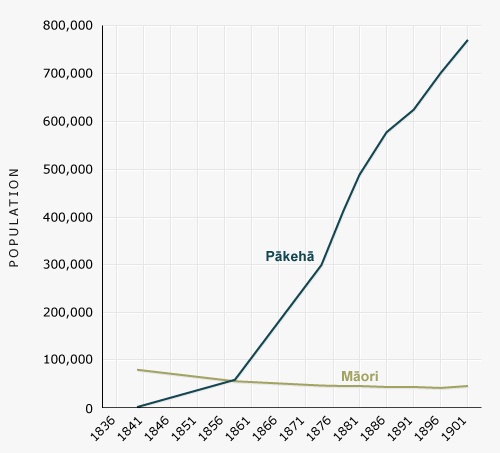
This graph shows the dramatic change in the proportion of Māori to non-Māori during the mid and late 19th century. The overwhelming dominance of Māori in 1840 may have contributed to the willingness of many chiefs to sign a treaty with the Crown. Over the following decades, however, the Māori population declined while numbers of non-Māori increased more than ten-fold. The non-Māori population surged during the gold rushes of the early 1860s, and again during Vogel’s assisited immigration scheme of the 1870s, before the rate of increase slowed during the Long Depression of the 1880s.
The size of the Māori population during the first two-thirds of the 19th century is unclear. Clearly the Musket Wars were a major factor in population decline; but so was exposure to diseases to which Māori initially had no immunity, such as measles, influenza and tuberculosis. Fatal Impact theorists and those who promoted the notion of Social Darwinism following the publication of Charles Darwin’s Origin of species in 1859 maintained that ‘inferior races’ melted away following contact with Europeans. In New Zealand there was talk of a need to ‘smooth the dying pillow’. Fears of Māori dying out proved groundless, and from 1901 the Māori population was clearly increasing. See more detailed graphs of Māori population trends on Te Ara.

Community contributions